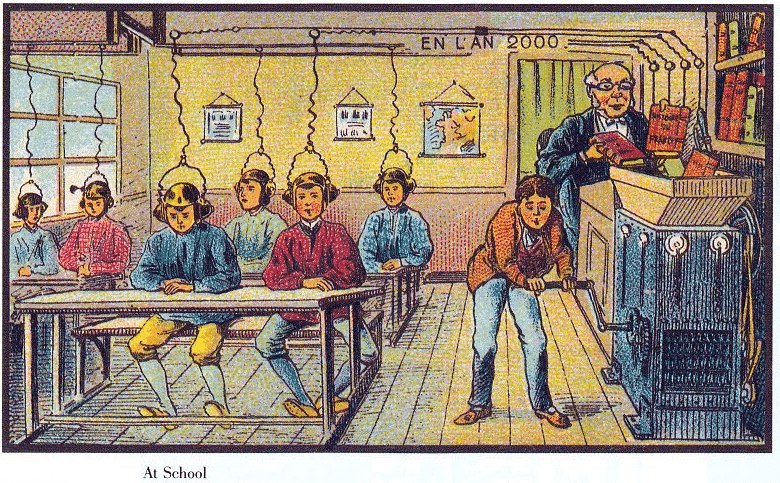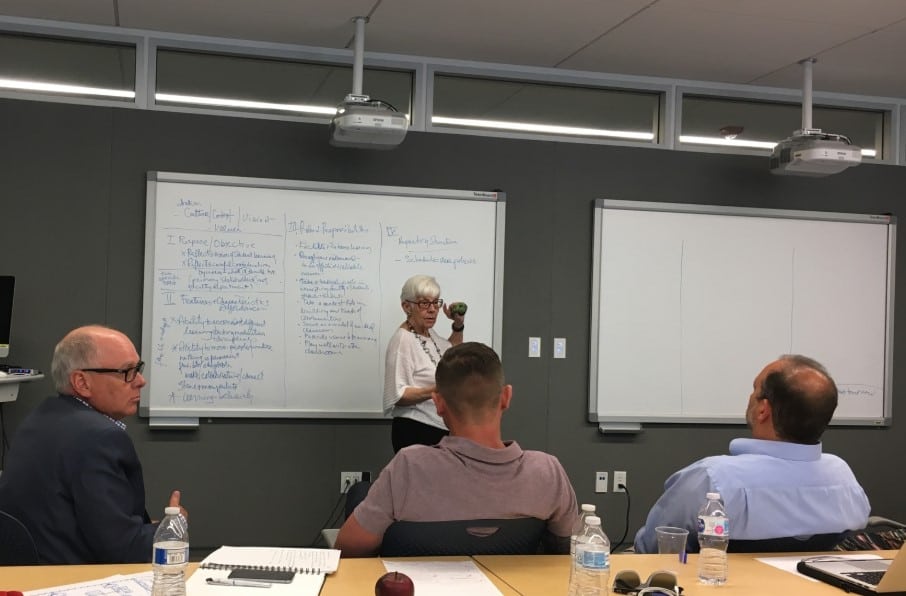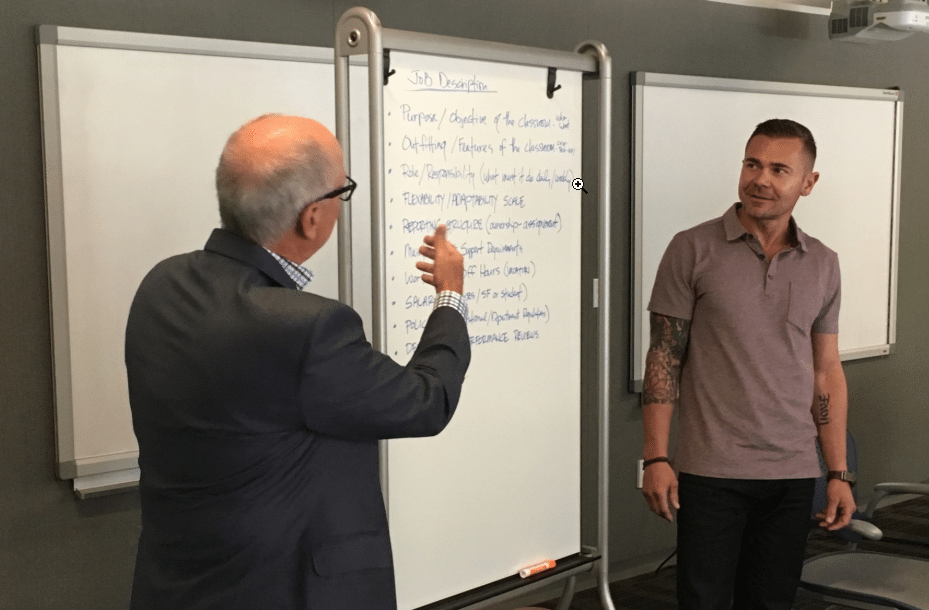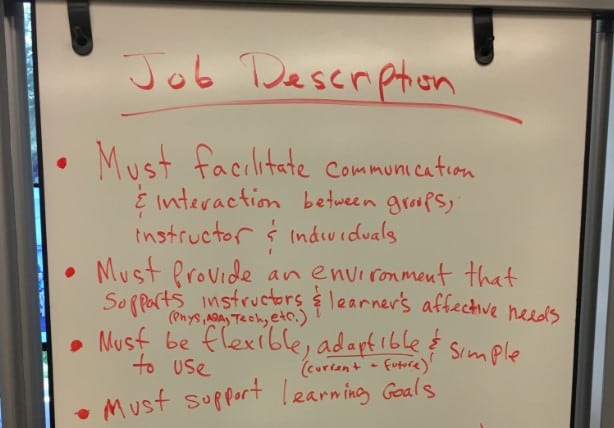What does the ideal college classroom look like? What experiences of learning should be expected and anticipated? What are the roadblocks, challenges and opportunities that will need to be overcome to make the case for active-learning classrooms? How do we establish measures to assess the impact of these spaces on learners and on institutions?

At School: A futuristic picture by French Artist Jean-Marc Côté of a 19th-Century Vision of the Year 2000 – from a presentation by Bora at the Stanford roundtable discussion
In June, Mike Dannenberg, associate principal at Vantage, participated in a roundtable discussion at Stanford University hosted by Jeanne Narum from the Learning Spaces Collaboratory and Bob Smith, Director of Classroom Innovation at Stanford University. The discussion tackled the above questions and began to draft a “job description” for an ideal higher education classroom. Also participating in the roundtable workshop were representatives from CSU Monterey Bay, CSU East Bay, Santa Clara, San Jose State, Stanford, EHDD, Stantec and Bora.
After a tour of some of the classroom spaces at Stanford, the group got down to business.
How was the Roundtable Organized?
The starting point for the discussion was the LSC Guide to Planning 21st Century Spaces for 21st Century Learners and began by asking these two questions:
- What do we want our learners to become?
- What experiences make that becoming happen?
The goal of this roundtable was to collectively draft a job description for a classroom which is a process that reflects and anticipates discussions for on-campus planning teams.
The roundtable used these 6 steps to guide and focus their discussion:
- Drawing individual images of the “ideal” classroom
- Making the case for each individual image, describing what that space enables learners to do; explaining the experiences of learning that each “ideal” classroom is designed to promote.
- Exploring the connection between the institutional/departmental vision of what these spaces enable learners to do, to become.
- Making the case internally for active-learning classrooms; identifying roadblocks, challenges, and opportunities.
- Establishing measures to assess the impact of these spaces, on learners and at the institutional level.
- Visualizing the complexity of this process of realizing the “ideal” classroom for 21st century learners.
The larger group was broken into smaller sub-groups who brainstormed their ideas and presented them to the entire group.

Jeanne Narum from LSC Leading the Discussion
What Were Some of the Classroom Job Description Insights?
Many great ideas came out of the discussion including these nuggets from the idea presentations:
“Technology should not be the focus, the focus should be the student”
“Teaching has to be first, and the tools needs to support the instructor”
“Tools should be easy to use, built into the pedagogy and used effectively”
“All technology should be well understood or not implemented”
“There is a paradigm shift from didactic to storytelling and interaction”

Another Team Presenting Their Insights
One of the groups broke their analysis into key elements:
- Competencies – project-focused learning, research, communication
- Needs – mental, academic, emotional, physical
- Physical – acoustics, visual, communicate 1 to 1 and 1 to many
- Comfort – lighting, cooling, windows, color, sound
- ADA – need to address accessibility needs

More Insights from Another Team
What are the Next Steps?
The final homework assignment from the roundtable is that the team will collaboratively write a paper outlining the job description for a classroom for the LSC Roadmap for Planning.
The next 4 roundtables for fall 2018 have already been scheduled and will focus on what a classroom should be able to do, specifically exploring the institutional policies and practices for transforming the physical environment for learning – before, during and after engaging architects:
- Trinity University
November 2 – 3, 2018 - Rollins College
November 30 – December 1, 2018 - California State University, Los Angeles
December 14 – 15, 2018 - James Madison University
February 22 – 23, 2019
Learn more about the Learning Spaces Collaboratory and read our blog post with how we are currently supporting LSC’s efforts.
Vantage collaborates with schools and universities to design forward-looking technology-enabled teaching and learning environments, and has completed multiple classroom technology assessment, masterplan and visioning projects.

